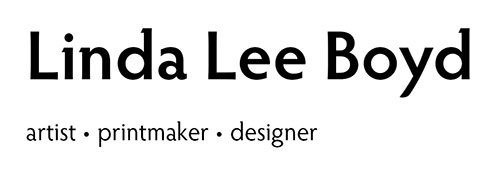|
Statement and Technique
Of all printmaking techniques, cutting and printing woodcuts has always felt
the most natural to me.
Since I find people interesting to look at, Alice Neal, Lucian Freud, Rembrandt,
and Vermeer are figurative artists whom I particularly admire. I started with
images of my family, friends, and then co-workers, which led to a series of
prints of workers. These prints of workers are observations of the men, but
are also an attempt to give the viewer a sense of how they feel about themselves
and their work.
I take photos in order to make prints and frequently combine several photos
in one print. I use an overhead projector to enlarge the photo to get the proportions
correct. Then I redraw it on another sheet of paper, working with it until
the whole is right. After that, I transfer this line drawing to the block using
carbon paper. Before I cut, I do a complete drawing in pencil with full shading
so I know where the lights and darks are.
I use electrical tools such as an electric engraving tool and a Dremel, plus
the usual hand tools (U- and V-gouges) as well as wire brushes. The drawing
takes the longest time, but it makes the cutting comparatively easy. I use
quarter-inch finish-grade birch plywood. Nowadays plywood manufacturers cut
the veneer with lasers so the surface is much thinner than it used to be, making
it harder to get the range of tones since the veneer is easily obliterated.
To counteract this, I gesso the board before I draw and put two coats of polyurethane
on the drawing before I cut in order to stabilize the veneer. Although many
of my prints are black and white, when I do use color, it is to differentiate
areas of the print. I want the color to be subtle, not the main focus or the
primary means of expression. I am interested primarily in shapes and textures
and what they represent. Needless
to say, my process is very labor-intensive. “You must have a
lot of patience” is a comment I have heard frequently over the years.
At first I thought, “Do they mean it only takes patience?” Then
I realized the comment may come from a limited knowledge of art-making in general
and woodblock printing in particular. In reality, it takes no more time for
me to do a woodblock print than it takes for a painter to produce a painting
of a similar size. With a painting, the viewer does not see the individual
brush strokes. With a woodblock print, the viewer sees every cut. The essence
of a woodcut is the contrast between what is cut away and what is left to take
and transfer the ink to the paper. Patience is only one component of the many
required to make any piece of art. |
